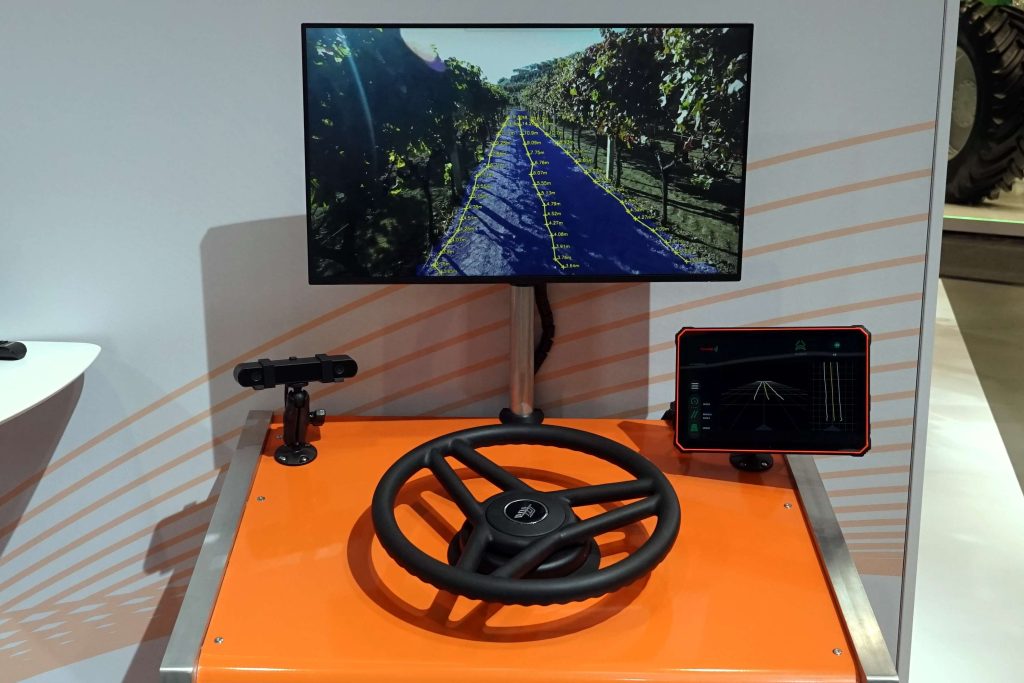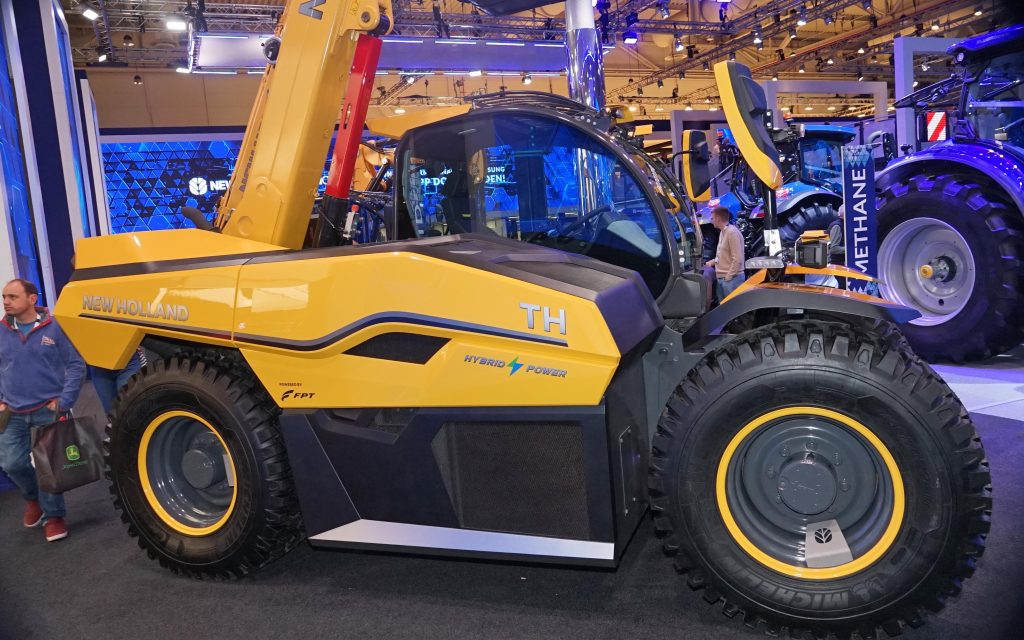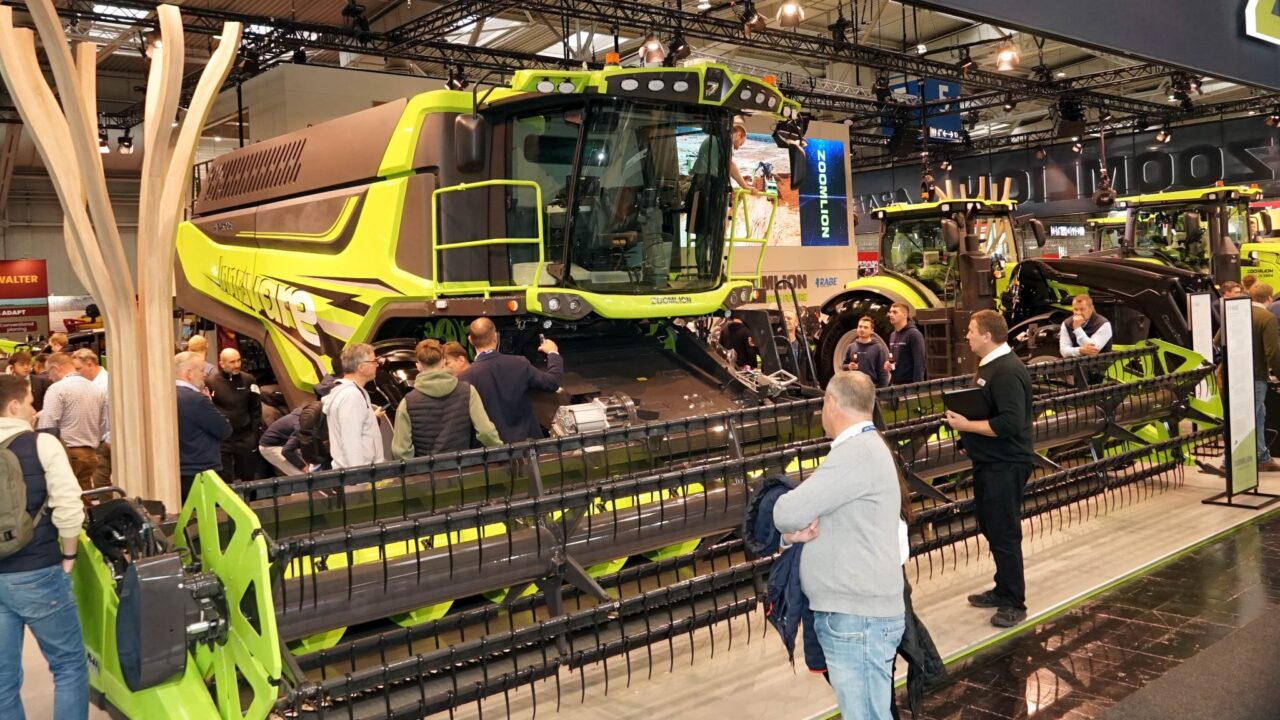One of the big news items from this year’s Agritechnica was the presence on Zoomlion’s stand of not just a hybrid tractor, but also a hybrid combine.
Zoomlion is a large Chinese engineering conglomerate with roots deep within the mining and construction industries.
Therefore, it should be no surprise that it has the ability to suddenly appear at Agritechnica with two quite revolutionary machines.
Mention has already been made of the DV3504, a 430hp tractor that relies on a six cylinder engine driving an electrical transmission lifted straight from one of the company’s mine trucks.
Mine truck mystery
This is what visitors to the stand were told; however, if looking for verification on the Zoomlion website, its mining equipment section is no longer there.
Yet it has been noted elsewhere that the mine trucks themselves were influenced by developments in China’s high speed rail traction units, and the country is approaching 30,000 miles (48,280km) in its network.

Powering an agricultural tractor of a mere 430hp must be a reasonably simple affair by comparison and the mystery as to how they can conjure one up from seemingly nowhere is easily solved.
It is not as if we do not have the ability here in Europe – Liebherr produce a 4,000hp diesel electric mine truck and is a company that already has close ties to the agricultural machinery industry.
Goodbye belts
In addition to the tractor, Zoomlion had a hybrid combine.
This alone should have given the western implement makers quite a jolt, for while they have been quietly mulling over the idea of replacing all hydraulic pumps and pipes with cables and motors, China has just got on with it.
True, it is a combine, and so there is no need to connect a tractor to a working implement with an electric cable, rather than a power take-off (PTO) and hydraulic pipes.

Yet the various functions of a combine that would have been powered by belts, pulleys, and pipes now have electric motors and cables that do not stress the framework to the same degree as mechanical drive.
This is one of the design constraints of towed machinery such as balers and harvesters; they require a heavier frame to cope with shaft and belt drives to the various functioning elements.
Flexibility of mounting
Electric motors can be clamped where they are needed and a cable routed wherever it is most convenient to do so, drawing the power from hybrid tractors.
Two caveats here: the first is that not all the belts and hydraulics have been done away with; while the second is that electric motors still need cooling.

Many will also point out that Chinese manufacturers have no real distribution network in Europe that is capable of selling and servicing these machines, so the mainline manufactures need not lose too much sleep just yet.
That, though, misses the point that while here in the west we have been pursuing electronic and data farming with an ongoing fuss over fuel types, China has taken a different direction and brought to market two machines that are far in advance of anything produced by manufacturers we are more familiar with.
India steps up
It is not just China either, although it caught it the headlines with its mega machines.
At the lower end of the power scale, TAFE Tractors of India slipped in a hybrid tractor that was actually designed at its UK development centre in Shropshire.
This tractor also represented a departure from the standard western approach to the next stage of tractor evolution.
The contrast between its launch and that of the Series 8 from Deutz Fahr, held a few hours earlier, could hardly be greater.

Deutz Fahr went full on razzmatazz, with large flashy graphics and images of humanoid robots gazing in wonder at the company’s latest creation – TAFE did not.
The SDF parent company has a €2bn turnover and manufactured 24,000 units in 2024, a decline from 2023, but that was the story of tractor sales generally last year.
TAFE Tractors were not far behind with a turnover of 1.6 billion, but it produced over 200,000 tractors, roughly equivalent to the total EU market in unit numbers.
Different markets
Of course, the difference is that the TAFE product is smaller and nowhere near as complex, so the average unit price is a great deal less.
To dismiss the achievements of the Indian company on this basis in creating a well-thought out hybrid is once again to miss a major point, and that is its technology is designed for the smaller farmer and likely to trickle up.

During the launch event, it was noted by owner and managing director, Mallika Srinivasan, that the company’s focus is on the sub-100hp market segment.
Yet she also pointed out that the integrity of partnerships is vital to the company’s ethos.
Whether such partnerships will extend to selling its technology to producers of larger tractors could become a question of interest to other manufacturers.
Signs of awakening in the west
The big manufactures serving the western market have looked closely at battery powered tractors and, in general, concluded that they are a niche product.
There has been little, if any, mention of hybrids, yet New Holland came to Agritechnica with just one such machine – though in the form of a telescopic handler rather than a tractor.
This being New Holland though, it was not diesel oil powering the loader but liquified natural gas (LNG), an alternative fuel they earnestly pursue, much as JCB does hydrogen.

New Holland tells us that the loader is currently still in the prototype phase, and features an electric drivetrain connected to a supplementary battery/electric power system.
It operates fully electrically for up to four hours on medium-heavy tasks and up to six hours on light-duty cycles with a 2.7L 100hp engine, running on LNG, backing it up.
Hybrids save fuel
New Holland also points to the fact that in such applications engines can constantly run at their most efficient speed, adding significantly to the fuel saving.
This is one further advantage of hybrids; in addition to the displacement of the mechanical gearbox they can power implements by electricity and enable engines to run at their optimum speed.
Eastern countries are showing the way, will the western manufacturers catch up?

